i-pel Blog
A History of Education Technology
This article is an abstract from Dr. Maryanne Berry’s Sonoma State University EDCT 552 Praxis Course
Watching the NY Times timeline “The Evolution of Classroom Technology” was a good look at how far classroom technology has come and what was considered “technology.” The “Hornbook” and the “Pointer” looked more like the tools of corporal punishment rather than teaching aids. The progression of the “Magic Lantern;” to the “iPad” was a great timeline of the “visual” aids used in the classroom. These devices eventually led to the PowerPoint and now on to the Infographic.
Russell’s “A Brief History of Technology in Education” was the narrative for the NY Times “Timeline” graphic. For the most part I would agree with his observation, “Today, most people associate “educational technology” with computers and the Internet,” however in America’s primary and secondary schools educational technology encompasses much more than computers and has roots that extend back several centuries. Blackboards and books are now taken for granted and are assumed to be part of every student’s educational experience. In their day, these “technologies” were viewed as radical and revolutionary teaching and learning tools. (Russell, 2006, p.137)
In 1806, students would use a desktop sandbox to practice the alphabet. After the children had made each of the letters, the monitor smoothed the sand with a flat iron and a new letter was presented” (Gutek, 1986, p. 62). Considered “a new form of education technology” (Russell, 2006, p.137) one of the earliest forms of teaching technology was images that were drawn in the sand.
After going through most of the devices that were presented in the NY Times “Timeline” Russell finishes his article with computers as the most current “new” educational technology by stating, “While there are many more examples of computer-based tools that are used in today’s classrooms, there is no question that computers are the most recent technology that has penetrated the American educational system. However, an important question that remains largely unanswered focuses on how computer use in schools is affecting teaching and learning” (Russell, 2006, p.152). Good question, but since computers offer so much in the way of education, I think computers are the best thing to happen in the classroom since the blackboard.
I want to include the Cuban and Strudler quotes as they put a contemporary spin on the evolution of education technology. “I predict that the slow revolution in technology access, fueled by popular support and continuing as long as there is economic prosperity, will eventually yield exactly what the promoters have sought: every student, like every worker, will eventually have a personal computer. But no fundamental change in teaching practices will occur;” (Larry Cuban – Stanford) and “Nearly the entire field of technology and education is about change in some way. It’s about the dreams of what could be, the realities of what is, and the efforts to whittle away at the gap between the two.” (Neal Strudler – UNLV)
TECHNOLOGY IN EDUCATION
The first American schools were one-room cabins, the mission of which was to produce literate and moral citizens. Students attended school for between one and six months a year and there were few educational tools available. But as increasing numbers of American communities were settled the education system became more firmly established. To aid the learning process, educational technologies, such as slates, hornbooks, blackboards, and books were introduced.
Although technologies like the blackboard and books are now taken for granted and are assumed to be part of every student’s educational experience, these technologies were viewed as radical teaching tools when they were first introduced. Over time, a variety of technologies such as film, radio, television, teaching machines, microcomputers and the Internet have been introduced to schools, each sparking controversy about its usefulness for schooling and effectiveness as a teaching and learning aid.
THE HORNBOOK AND PRINTED BOOKS
Johannes Gutenberg began building a primitive version of the printing press in 1436 and the first Gutenberg Bible was printed in 1455 (de la Mare, 1997). Nearly two centuries later Stephen Dayne brought the first printing press used in the United States (Rubinstein, 1999). However, since they were expensive and were not readily available, books were not commonly used in the early years of American schooling.
In lieu of printed books, American settlers improvised with a device known as the hornbook. Adopted from England, the hornbook was one of the first forms of educational technology used to aid in teaching reading in American schools. A hornbook was “a small, wooden, paddle-shaped instrument. A sheet of paper, with the alphabet, numerals, the Lord’s Prayer, and other reading matter printed on it was pasted upon the blade and the entire implement was covered with sheets of transparent horn” (Good & Teller, 1973, p. 28). The hornbook was a crude, low-cost solution to the American settler’s problem of how to teach children to read without having books available. Although it was useful at the time, the hornbook became obsolete as the cost of printing decreased and texts became more widely available.
Perhaps the most popular early printed book was the New England Primer: Introduced to schools in 1690, the New England Primer was intended to make learning to read more interesting for children. “The New England Primer contained the twenty-four letters of the alphabet, each letter being illustrated with a drawing and a verse to impress it on the child’s mind. The primer also contained various lessons and admonitions for youth, the Lord’s Prayer, and the Ten Commandments.” (Gutek, 1986, p. 10) Historian Paul Leicester Ford estimates that 3 million copies of the New England Primer were printed (Gutek, 1986).
The next generation of written texts included Webster’s first spelling book, followed by the McGuffy Readers. The evolution of these primitive textbooks allowed teachers to follow a predefined sequence of lesson plans that taught students how to read and write. In this way, early books served as a tool that began to standardize the content to which students were exposed.
THE SANDBOX
In 1806, the Lancastrian methodology of schooling was introduced in New York City and with this new method of teaching came a new form of educational technology. Lancaster’s method of education was appealing because a large number of students could be educated for a low cost. This method employed a master teacher as well as “monitors” (more advanced students) to teach large classes of students. The monitors, who had been trained by the master teacher taught groups of approximately twenty students a skill, such as writing. Students would use a sandbox on their desk to practice the alphabet: “White sand overlaid the box and the children traced the letters of the alphabet with their fingers in the sand, the black surface showing through in the form of the letter traced … After the children had made each of the letters, the monitor smoothed the sand with a flat iron and a new letter was presented” (Gutek, 1986, p. 62).
Lancaster chose sandboxes because they were the most economically affordable form of technology available at the time. But by the 1830’s, doubts about the effectiveness of the Lancastrian system surfaced. With the decline of this teaching method, the use of monitors and sandboxes ended. Later the sandboxes would be replaced by individual slates. Although they were more expensive, slates allowed students to practice their writing skills more easily. Erasing chalk from a slate was quicker and cleaner than ironing the surface of the sandbox.
THE BLACKBOARD
While individual slates were used in classrooms during the early 1800s, it was not until 1841 that the classroom chalkboard was first introduced. Shortly thereafter, Horace Mann began encouraging communities to buy chalkboards for their classrooms. By the late 1800s, the chalkboard had become a permanent fixture in most classrooms.
As with many forms of educational technology, learning how to integrate the chalkboard into classroom instruction was not an easy task. As Shade (2001) explains, “When first introduced, the chalkboard went unused for many years until teachers realized that it could be used for whole group instruction. They had to change their thinking from individual slates to classroom slates” (p. 2).
Similar to more modem forms of educational technology, the chalkboard also received praise from community leaders. As an example, Josiah Bumstead, a Springfield Massachusetts councilman, said, “The inventor or introducer of the blackboard deserves to be ranked among the best contributors to learning and science, if not among the greatest benefactors of mankind” (Daniel, 2000, p. 1). Thinking of the blackboard as a revolutionary form of educational technology seems counterintuitive. But it is one of the few types of media that has survived the test of time and is still regularly used in classrooms today.
MAGIC LANTERN
The height of its popularity was around 1870. The predecessor to the slide machine, the magic lantern projected images on glass plates. By the end of World War I, Chicago’s public school system had a collection of some 8,000 lantern slides.
LEAD PENCILS
Around the turn of the 20th century mass produced pencils and paper become readily available, gradually replacing the school slate.
STEREOSCOPE
At the turn of the 20th century, the Keystone View Company began to market stereoscopes. The three dimensional devices, which were popular in home parlors, were sold to schools featuring educational sets containing hundreds of images.
FILM
During the next several decades, the American educational system expanded and became more developed. The price of producing paper and printing books also dropped to levels that enabled paper to replace slates and allowed each child to have his or her own books. But just as books were becoming widely available to students, a new form of educational technology began to emerge, namely film.
The kinetoscope, which is now known as the motion picture, was invented in 1889. Over the next decade, film equipment was developed and refined. And in 1902, Charles Urban of London began exhibiting the first educational films. Among these films were “slow-motion, microscopic, and undersea views” and “such subjects as the growth of plants and the emergence of the butterfly from the chrysalis” (Saettler, 1990, p. 96). In 1911, Thomas Edison also contributed to the use of film in the classroom by producing a series on the American Revolution.
With the rapid growth of American schools, both in terms of the number of schools and the quantity of students attending those schools, there was a pressing need to provide standard, high-quality instruction to large numbers of students. At the time, some proponents believed that using film in classrooms met this important educational need. As an example, Thomas Edison proclaimed, “Books will soon be obsolete in the schools. Scholars will soon be instructed through the eye. It is possible to touch every branch of human knowledge with the motion picture.” (Saettler, 1990, p. 98)
In 1910, enthusiasm for educational films led Rochester New York’s Board of Education to adopt education films for instructional use. Many other public school systems soon followed Rochester’s lead and by 1931 “twenty-five states had units in their departments of education devoted to films and related media” (Cuban, 1986, p. 12). Edison’s prophecy and the public school support for educational film spawned a new and quickly growing industry in America, namely educational film.
As early as 1910, more than 1,000 film titles were catalogued in George Kleine’s Catalogue of Educational Motion Pictures. In 1923 Frank Freeman classified the existing educational films into the following four categories: “(1) the dramatic, either fictional or historical; (2) the anthropological or sociological, differing from the dramatic in that it is not primarily based on a narrative or story; (3) the industrial or commercial, which show the processes of modern industry and commerce; and (4) the scientific, which may be classified into subgroups corresponding to the individual sciences, such as earth science, nature study, etc.” (Saettler, 1990, p. 97).
Despite the explosion of educational films, conflict emerged between the commercial interests and the educational interests of the film industry. Concerns about the financial bottom line led the film industry to develop educational films which some critics claimed lacked content and were more theatrical in nature. In addition, teachers often were not asked for input and guidance in making educational films. As a result, the films frequently did not meet teachers’ needs. Then, in the late 1920s, sound film was introduced.
Although the ability to include sound was a step forward for the film industry, it also contributed to the demise of educational filming. Requiring new and expensive equipment, production of educational sound films became an expensive endeavor. At a time when commercial filming was struggling and educators were questioning the merit of film in classrooms, strong advocacy for educational sound films was lacking.
Although film continued to be widely used by the government for armed forces training, agricultural demonstrations, and public relations, the impact of film in the classroom was minimal. As Cuban (l986) described, “film took up a bare fraction of the instructional day. As a new classroom tool, film may have entered the teacher’s repertoire, but, for any number of reasons, teachers used it hardly at all” (p. 17). According to Cuban, the main reasons for the limited instructional use of film included “teachers’ lack of skills in using equipment and film, cost of films, equipment and upkeep, inaccessibility of equipment when it is needed and finding and fitting the right film to the class” (p. 18).
RADIO
Radio entered the educational system in the early 1920s. Like the early days of film, radio was heralded as a tool that would revolutionize classroom teaching. Similar to the proclamations of Thomas Edison regarding film, William Levenson, the author of Teaching through Radio, predicted, “The time may come when a portable radio receiver will be as common in the classroom as is the blackboard. Radio instruction will be integrated into school life as an accepted educational medium.” (Cuban, 1986, p. 24)
In 1923 Haaren High School in New York City became the first public school to use the radio in classroom teaching. Following a decision by the Radio Division of the U.S. Department of Commerce to license time from commercial stations to broadcast educational lessons, many more schools and districts bought equipment and made plans to use the radio in classrooms. Falling equipment prices in the 1930s further increased interest in the instructional use of radio.
Typically, educational radio programs lasted between 30-60 minutes and were broadcasted a few times a week. The limited amount of broadcast time “destined radio usage to be viewed as a supplement to teacher instruction.” (Cuban, 1986, p. 22) Nonetheless, a wide range of radio lessons were readily available to teachers. “There were broadcasts for elementary school listeners and for secondary-school students. There were dramatic re-creations of American history, challenging interpretations of American folk music, delightful dramatizations of children’s stories and legends. There were, in short, a variety and a wealth of curricular material on the air.” (Woelfel & Tyler, 1945, p. 42)
Two survey studies conducted in 1941, one in Ohio and one in California found that the majority of schools had radio receivers. Moreover, the amount of radio hardware available to teachers in the 1930s and 1940s exceeded the amount of film hardware available at the height of film use.
Higher education was also impacted by the invention of the radio. Some colleges and universities established their own radio stations for instructional use. Ohio State University first began broadcasting weather reports in 1912. But the radio was not used for instructional use in higher education until the 1920s, when “schools of the air” were formed. These radio-based schools partnered with a local radio station, developed curriculum, created lesson leaflets, produced educational programs, established a weekly schedule for broadcasts, trained staff, and ultimately executed the concept of “schools of the air.”
Educational technology zealots initially dreamed of the radio replacing both schools and teachers. But by the end of the 1940s, funding and educators enthusiasm for radio use diminished significantly. Saettler identified problems with equipment and support as two factors that limited instructional use of radio. In addition, Saettler (1990) found that schools “fail to use (the radio) properly or integrate its programming with the school curriculum” (p. 197).
Similar to problems encountered by educational films, another factor that contributed to the downfall of educational radio was the struggle between commercial stations and educators. A 1925 decision by Herbert Hoover, who was then Secretary of Commerce, to leave radio in the hands of American business, instead of having it controlled by the government made efforts to keep educational radio alive exceedingly difficult. Unable to conduct a unified fight to maintain a presence on radio stations, educational interests in radio were overpowered by the commercial radio stations united fight against educational radio. “The networks maintained that allocating frequencies for educational broadcasting would only disrupt a successful system of broadcasting that had just begun to function well.” (Saettler, 1990, p. 203) As a result, educational radio languished as the big business of commercial radio boomed.
By the end of the 1940s, technology proponents had given up on educational radio and instead began focusing on the use of television in schools, which was perceived to be the ultimate combination of audio and visual technology.
OVERHEAD PROJECTOR
In the 1930’s the overhead projector was widely used by the U. S. Military to train forces during World War II and eventually the device spread to schools.
THE TYPEWRITER
An often overlooked form of educational technology, the typewriter is the one form of mechanical technology that has penetrated and been used by large numbers of students over several decades. This use, however, has generally been limited to “business” classes that focus specifically on teaching students how to type. While typewriters were present in most high schools into the 1990s, they have been absent from the majority of classrooms and not used widely throughout a student’s educational experience. However, there are close parallels between the typewriter and more modem forms of computer-based technologies.
The first functioning typewriter was marketed and sold by the Remington Arms Company in 1873. Years of refinement and use in the business world followed this initial product launch before typewriters were introduced to schools in the 1920’s. Soon thereafter, Ben Wood and Frank Freeman (1932) conducted a large-scale experiment to develop an understanding of how typewriters might be used in early elementary classrooms.
Occurring between 1929 through 1931, Wood and Freeman’s experiment was similar to many studies of computers conducted during the late 1980s and the 1990s in that the stated purpose of Wood and Freeman’s investigation was “to study the nature and extent of the educational influences of the portable typewriter when used as a part of the regular classroom equipment in the kindergarten and elementary school grades” (p. 1). In other words, rather than focusing narrowly on how the use of typewriters affected the writing skills of young children, Wood and Freeman were primarily interested in how instructional practices and classroom ecology changed. For this reason Wood and Freeman’s study examined how the typewriter could be integrated into the curriculum and the impacts that it had on teaching and learning.
Almost 15,000 students from eight public school districts and five private schools participated in the experiment. Treatment and control groups were formed in order to study the differences in student learning. Data that was analyzed included achievement test gains, student writing samples, teacher questionnaires, classroom observations, and student letters about why they like typewriting.
Based upon their study, Wood and Freeman (1932) concluded that there were three important reasons for using the typewriter in schools:
(1) to teach students skills that they will use later in life for personal or professional reasons
(2) to enable students to better learn English, spelling, arithmetic, geography, history, etc.,
(3) to develop those attitudes and habits which constitute so important a part of the aims of elementary school education” (p. 179).
Even though Wood and Freeman (1932) found evidence that typewriters could be used in early elementary classrooms, and this use had a positive impact on student learning, their recommendation to place typewriters in all early elementary classrooms was never implemented. In part, the high cost required for such large numbers of typewriters was not feasible, particularly when the nation was struggling with a major economic depression. Instead of being directly placed and used in classrooms as a writing tool, typewriters were used to prepare students for the business world by teaching high school students the professional skill of typewriting.
TELEVISION
Although it wasn’t until the 1950s and 1960s that instructional television reached its peak, the first documented use of closed circuit television was in Los Angeles public schools and at the State University of Iowa in 1939. While the popularity of instructional television was rising between 1939 and the 1950s, the overall United States educational system was facing harsh criticism.
Alleged evidence of the ailing educational system culminated with Russia’s launch of Sputnik in 1957. Fear that the Russians had surpassed the United States in science and technology led to educational reform efforts. Instructional television was viewed as one way to gain ground in the fight to stay ahead in technology. In response, financial support for instructional television poured in from many government and industry sources. The Ford Foundation alone “expended more than $300 million for the national educational television movement” (Saettler, 1990, p. 372).
Funding was provided for several types of instructional television application similar to the introduction of film. Some administrators and government officials hypothesized that television could provide students with a better education at a lower cost. To this end, a few school systems, such as Hagerstown Maryland and American Samoa, attempted to substitute a large portion of teacher-led classroom time with educational television programming. The primary reason for the infusion of television in these communities was the lack of certified teachers. In most schools, however, instructional television served a supplemental role and was used minimally. Cuban estimates that by 1975 primary-grade students spent on average only five hours a week learning through instructional television (Cuban, 1986. p. 32).
During the 1960s the television industry underwent a major transformation. In 1965, a Carnegie Corporation Commission recommended that “the federal government establish an independent, nonprofit Corporation for Public Television that would receive money from the government and other sources and distribute these funds to individual stations and independent production centers” (Saettler, 1990, p. 377).
Essentially putting into effect the Carnegie Corporation recommendation the Public Broadcasting Act was passed in 1967. Two years later, the Corporation for Public Broadcasting (CPB) was established and in 1970 the Public Broadcasting Service was created to act as a distribution point and to manage the interconnection between stations.
All of these events in the public television industry would appear to set the stage for tremendous success of instructional television. However, some critics believe the end result hurt instructional television more than it helped. For example, Bronson criticized the way that the CPB handled instructional television, stating that it “indicates a questionable bureaucratic concern with directing social change rather than in promoting the development of educational broad casting” (Saettler. 1990, p. 384).
Although several early studies showed benefits of television over teacher instruction, later reports revealed that support for instructional television had diminished significantly. One source of this lack of support was from teachers. Typically, implementations of instructional television did not considered teacher needs or views. Cuban (1986) describes how, rather than consulting teachers, “television was hurled at teachers” (p. 36).
Interest in educational applications of televisions was revived in 1989 when a private, for-profit company began marketing an educational channel directly to schools. As Saettler (1990) describes, “Whittle Communications assembled a board of twelve educators and public figures to provide advice and direction for Channel One, a satellite-received news programming venture aimed at elementary schools” (p. 533). As an incentive to broadcast Channel One to students, Whittle Communications offered schools up to $50,000 of free televisions and video equipment and 1,000 hours of educational programming in exchange for a guarantee that students would watch 12 minutes of daily news programs which includes two minutes of paid commercials each day. Channel One has since changed its focus from elementary schools to middle and high schools, but maintains the same business plan.
Despite the fact that California and New York banned Channel One, by 1993 more than 8 million students nationwide watched Channel One’s programming daily (Barry, 1994, p. 103). Channel One, however, has faced strong opposition. As Saettler (1990) states, “All critics agree that the classroom should not become another market to exploit” (p. 534). Channel One is yet another example of the tension, and perhaps incompatibility between corporate America and the educational system.
TEACHING MACHINES AND PROGRAMMED INSTRUCTION
In the 1960s, behavioral psychology contributed to the educational technology field by introducing “teaching machines.” Reminiscent of Tiu! Turk, an 18th century “computer” that wore a turban and played chess (Standage, 2002), teaching machines were intended to teach students through thoughtfully programmed instruction.
The premise behind teaching machines was that objectives must be defined in advance and the extent to which these objectives are achieved must be measured. Students operated the machines themselves and followed instructions on a screen similar to a television. Typically, individual student cubicles were set up to block the noise made by the machines. This format minimized the amount of interaction among students and between students and the teacher.![]()
![]()
Books accompanied the teaching machines and functioned in an adaptive fashion, so that if a student did not understand a concept, the student is directed to a section that further explained it. If the student exhibited mastery of the concept, he or she was directed to the next topic. Teachers were able to program the teaching machines based on their desired curricular goals while students worked at their own pace through the lesson plans. But once programmed, it was the machine that directed students to the appropriate lesson, either in books or on the machine.
When using programmed instruction, students were first presented with material in successively more difficulty steps. The student was then asked to answer a question about the material. Some questions were multiple choice, while others used a fill in the blank format. The program then compared the student’s answer with the correct answer. Positive reinforcement was given to students who responded correctly while the proper response was provided to students who answered incorrectly. Skinner believed that all students should be administered the same set of questions, and students should be able to answer 95% of the questions correctly.
Later in the life cycle of teaching machines and programmed instruction branching algorithms and adaptive tests were developed to tailor the material and questions to an individual student’s needs. In general, evaluation of programmed instruction in the classroom showed that although implementation was difficult, the combination of teacher instruction and programmed instruction was more effective than either method used in isolation.
Skinner described the key characteristic of teaching machines and programmed instruction as “the arrangement of materials so that the student could make correct responses and receive reinforcement when correct responses were made” (Saettler, 1990, p. 294). This statement points to one of the major sources of conflict in the use of teaching machines. Too often teachers and administrators found themselves caught up in the excitement of using technology and neglected what many people now recognize as the more important component- the program of instruction. Students were sometimes bored with the level of instruction, and other times, they found ways to cheat the system and bypass lessons (p. 303).
Skinner introduced programmed instruction at Harvard University in 1957. A year later, Evans used the programmed instruction concept in books at the University of Pennsylvania. The first use of programmed instruction in an elementary school was in 1957 at the Mystic School in Winchester, Massachusetts. In general, though, teaching machines and programmed instruction were not widely used in public school classrooms or in higher education.
The popularity of teaching machines and programmed instruction followed the familiar cycle of most other forms of educational technology. In the late 1950s many people in the educational technology community expressed praise for this new tool: “In its short history this area of teaching technology has had a remarkably widespread effect on all forms of teaching” (Kay, Dodd, & Sime, 1968, p. 1). However, teaching machines and instructional programming never reached the stage of widespread use and in the late 1960s even the strongest proponents were backing down from their initial claims. Skinner once said, “… unfortunately, much of the technology has lost contact with its basic science. Teaching machines are widely misunderstood.” (Saettler, 1990, p. 303)
COMPUTERS
The research in the 1950s and 1960s on programmed instruction laid the foundation for the development of more advanced learning systems. Computers were first used in education in the 1960s in a way that was intended to individualize instruction. This method became known as computer assisted instruction (CAI).
CAI was intended to teach students a specific content area. Initially, the only difference between CAI and teaching machines was the type of technology used to deliver the material. Drill and practice techniques were common. “The student was asked to make simple responses, fill in the blanks, choose among a restricted set of alternatives, or supply a missing word or phrase. If the response was wrong, the machine would assume control, flash the word ‘wrong’ and generate another problem. If the response was correct, additional material would be presented.” (Saettler, 1990, p. 307)
The first generation of CAI programs used mainframe computers, was very expensive, and did not achieve the expected benefits of improving education through computer-based individualized instruction. However, this initial introduction of computers in schools spawned interest in a variety of other computer-based applications.
In the late 1970s the cost and availability of microcomputers reached a level at which it was more practical to place computers in K-12 schools. For a variety of reasons, parents, industry leaders, and government officials put pressure on school districts and principals to introduce computers into the schools. One reason for this computer enthusiasm was the fear that the United States was continuing to fall behind other world powers in terms of technology (C. Hunter, 1998), and teaching students to learn how to use computers seemed like one solution to this problem.
Another reason for the external pressure to use computers in schools was the perceived need to teach children job-related skills. In the late 1970s and early 1980s, the importance of computers in the business world increased rapidly. As a result, teaching students how to use computers provided them with real-world skills and helped them become more competitive e in the job market.
Finally, it was argued that computers would make the educational process more efficient. Many computer advocates argued that a more refined version of the mainframe computer-assisted instruction would allow larger class sizes and, therefore, there would be a need for fewer teachers, since students would be able to rely on the computer for a significant portion of their learning.
Depending upon one’s perspective, the use of computers in schools differed significantly. For example, if the goal was to teach students how to use a computer so that they could obtain work skills, schools would introduce computer literacy classes into the curriculum. If the goal was to improve instructional efficiency, the computer was used as a tool to teach students the predetermined content. Finally, some people argued that the main benefit of using a computer in the classroom was to improve students’ problem-solving skills. This debate over how computers should be used in schools still exists today and is strikingly similar to the differences between Wood and Freeman’s rational for placing typewriters in elementary classrooms in the late 1920s versus the use of typewriters in business classes to teach discrete typewriting skills in order to prepare students for the workplace.
But no matter what the intended uses were, computers entered schools in large numbers during the early 1980s. Cuban (1986) references a survey that found an increase of 100,000 computers in schools over the year and a half between fall 1980 and spring 1982. Between 1982 and 1984, that number grew to 325,000 computers. By 1988, there were an estimated 3 million computers in schools (Saettler, 1990, p. 457).
Much of this growth can be attributed to corporate donations, which companies made in an effort to gain an edge in the educational computing market. Throughout the 1980s, IBM, Apple Computer, Hewlett-Packard, and Tandy all donated substantial numbers of computers to public schools. In elementary schools, these computers were generally used for repetitive drilling of specific content. In high schools, computers were generally used to teach students computer skills.
By the end of the 1980s, computers came under heavy scrutiny. Government leaders, parents, and school administrators wanted evidence of the effectiveness of using computers in schools. Instead of detailing benefits, researchers revealed a list of obstacles to the use of computers in classrooms. Similar to the problems identified with film, teachers felt that they were generally excluded from the development of instructional software and that the commercially available software generally did not meet their needs. Specifically, teachers felt that many of the available software packages did not engage students, and teachers felt that the drill and practice format was not an effective use of students’ time. Again similar to film, teachers also did not have the time or expertise to develop their own computer-based instructional materials. Finally, technical problems further frustrated teachers. All of these problems contributed to low usage. Saettler estimates that, on average, in the late 1980s, a typical student used a computer for less than 30 minutes a week.
In contrast to the 1980s, the 1990s was a decade of new ideas and innovations for computer use in classrooms. With the introduction of color monitors and graphical user interfaces, more interactive and interesting content-based software packages were developed by companies like Tom Snyder Productions. In addition, simulations, intelligent tutors and cognitive-based learning tools such as DIAGNOSER (Minstrell, Stimpson, & Hunt, 1992) or the Algebra Cognitive Tutor (Anderson et al., 1995) began to show promise for improving classroom learning. Schools also began to understand the benefit of helping teachers determine how to integrate computers into their curriculum. While these advances did not correct all the obstacles to computer use identified by teachers during the late 1980s, they reignited interest in instructional uses of computers.
LEARNING MANAGEMENT SYSTEMS
Learning Management Systems (LMS), also known as Instructional Management Systems are online collaboration and communication tools which enable administrators, teachers and students to collaborate and communicate online in real-time across geographic distance. Some of the more popular commercial and open source LMS include Blackboard Learning System, Share-Point LMS, ANGEL Learning Management Suite, Sakai, and Moodle.
LMS combine online course management, communication and collaboration tools which can include a discussion forums, file exchange, email, online journal/blog, real-time chat, interactive whiteboards, bookmarks, calendar, search tool, group work, electronic portfolio, registration integration, hosted services, quizzes/surveys, marking tools/grade book, student tracking, content sharing and object repositories, amongst other tool offerings. (Fox, C., et al. (2009) pg. 8).
INTELLIGENT TUTORING
The field of cognitive science has exploded over the past decade and computer applications have emerged to take advantage of this new knowledge of how the brain works. Merging the fields of education and cognitive science has proven to be difficult. Bruer (1998) describes, “New results in neuroscience, rarely mentioned in education literature, point to the brain’s lifelong capacity to reshape itself in response to experience. The challenge for educators is to develop learning environments and practices that can exploit the brain’s lifelong plasticity,” (p. 9). One practical application of lessons learned from programmed instruction and new information about how the brain works came in the 1990’s in the form of intelligent tutoring.
For the past decade, Carnegie Mellon has been developing cognitive tools. Carnegie Mellon’s first major tool, called the Practical Algebra Tutor (PAT), strives to improve students’ algebra skills and contains “a psychological model of the cognitive processes behind successful and near-successful student performance” (Koedinger, Anderson, Hadley & Mark, 1997, p. 32).
PAT is computer-based, uses real-world problems, and allows students to use several tools to solve a given problem. One example of a PAT problem is to determine which car rental company should be used on a vacation, given differing cost and terms of agreement information. Feedback is given to the student while he or she is solving the problem, allowing student misconceptions to be addressed while the student is still engaged with the problem. PAT uses model tracing to track a student’s progress throughout a problem and knowledge tracing to track a student’s progress in a series of problems. A Bayesian model, which estimates whether a student possesses a certain skill or knowledge of a particular subject, is used to highlight each student’s strengths and weaknesses. This information is then used to choose the next problem to be administered and to pace students.
The PAT program was first pilot tested in 1993 in three Pittsburgh high schools. Since then, the intelligent tutoring tools have been expanded to include a fully developed series of products (Algebra I, Geometry, Algebra II, Integrated Math Series and Quantitative Literacy) that are being used throughout the country. Through a series of studies conducted over the past decade (see Corbet, 2002 for a review of this research), evidence suggests that a diverse population of students “including mainstream, non-mainstream, gifted, minority, ESL and inclusive education students all benefit” from the use of the Cognitive Tutor® curricula (Carnegie Learning, 2002, para.
Similarly, researchers at the Concord Consortium have been working on an intelligent tutoring device that focuses on genetics and scientific reasoning skills. The system is intended to help eighth-, ninth-, and tenth-grade students learn about genetics through guided exploration. Most often, the system introduces students to new concepts by asking students to explore a specific topic through manipulation of genetic traits of a fictitious species of dragon. As students work with the system, new concepts are revealed through guided exploration. For example, the first set of explorations during one lesson culminates by asking students to describe how traits are produced in dragons.
At times, the learning system presents textual or graphical information to explain concepts and provides students with access to various tools and pieces of information via menu selections. In addition, the system often asks students to demonstrate their understanding through written responses to specific questions, multiple-choice questions and, most often, the modification of different aspects of genetic codes to create dragons with specific traits or to determine how a trait suddenly appears in a generation of dragons. From an instructional perspective, Biologica enables students to explore a complex topic via a variety of media and enables teachers to work individually or with small groups of students as questions arise.
Although these tools are being used in a relatively small number of classrooms, they show tremendous promise for using technology as a tool that assists students and teachers in both identifying and correcting misconceptions in a timely manner.
THE INTERNET
Today, the Internet is one of the more popular forms of educational technology used in classrooms. Although some college level courses can be taken online, often without any student-teacher interaction, this type of use is just beginning to penetrate K-12 public schools, particularly at the high school level. As an example, the Virtual High School (VHS) was launched in the late 1990s. Since then, VHS has grown and served approximately 3,000 students in more than 150 schools with 134 online courses in 2001. Similarly, the Florida Virtual School provides free, online instruction to 6,900 students enrolled in 65 Florida county school systems.
In addition to online courses, there are a variety of ways that the Internet is being used in classrooms. A 2002 study by the American Institutes for Research found that students use the Internet for school in the following five ways:
as a virtual textbook and reference library
- as a virtual tutor and study shortcut
- as a virtual study group
- as a virtual guidance counselor
- as a virtual locker/backpack and notebook
(Levin & Arafeh, 2002, p. iii). Teachers also integrate Internet-based activities into their lessons. In some cases, teachers will use data or simulations available on the Internet to demonstrate a concept or work through a problem with the whole class. With the rapid increase in Applets (mini-applications that are available on the Internet), teachers have access to powerful tools that enable easy manipulation of data and displays information in a manner that often makes it easier for students to visualize concepts.
As one example, the Technology and Assessment Study Collaborative has developed a set of applets that focus on specific statistical concepts (www.bc.edu/research/intasc/tools.shtrnl). These tools enable teachers and students to generate scatterplots that meet specific conditions (e.g., a correlation between two variables of .65 with 200 cases). The correlation applet also allows the user to move individual data points around within the scatterplot and then see how this change in a single data point affects the correlation. In addition, the applet allows the user to manipulate a “line of best fit” by clicking and dragging it on the screen. As the line is moved, the error of prediction is updated automatically enabling the user to visually explore how changes in the line affect the accuracy of the prediction. Applets developed by other organizations allow teachers to model scientific principles such as plate tectonics and sound waves by manipulating data and then visually displaying the effects.
Teachers also direct students to use the Internet to find and explore information related to a specific topic of study. As an example, many upper elementary and middle school teachers have students perform web-quests. In some cases, web-quests take the form of problems that require students to find and apply information to solve. As an example, a teacher might present a problem in which an animal that lives in Australia has decided to relocate to one of three areas within the United States. Students are then asked to use the Internet to find specific information about the animal and about each area of the United States and to then use this information to write a recommendation to the animal that includes data to support the recommendation. In other cases, web-quests take a more mundane form in which students are given a list of actual questions and are asked to use the Internet to find the answers.
While there are many more examples of computer-based tools that are used in today’s classrooms, there is no question that computers are the most recent technology that has penetrated the American educational system. However, an important question that remains largely unanswered focuses on how computer use in schools is affecting teaching and learning.
THE CLOUD
Although technically part of the internet, because of its impact on K-12 education cloud technology should be looked at separately.
Cloud computing relies on sharing of resources to achieve coherence and economies of scale, similar to a utility (like the electricity grid) over a network. At the foundation of cloud computing is the broader concept of converged infrastructure and shared services. Cloud resources are usually not only shared by multiple users but are also dynamically reallocated per demand. This approach maximizes the use of computing power thus reducing environmental damage as well since less power, air conditioning, rack space, etc. are required for a variety of functions. With cloud computing, multiple users can access a single server to retrieve and update their data without purchasing licenses for different applications.
The present availability of high-capacity networks, low-cost computers and storage devices as well as the widespread adoption of hardware virtualization, service-oriented architecture and autonomic and utility computing have led to a growth in cloud computing. School districts can scale up as computing needs increase and then scale down again as demands decrease. (Wikipedia)
Different schools use different devices at different grade levels which mean varying data storage needs. And, for example, there is no need to shoehorn an infrastructure built for the Android operating system to fit a Mac-only school. Using “standards-based vendor control” cloud technology allows the accommodation of the districts for any device choice, whether it is a Chromebook, an Android device, or an Apple device which typically have no hard drives. The cloud technology allows the schools to pick the device and to find the common denominators in delivering support services.
Freedom of choice applies to where students can do their work. A lot of local school districts rely on local outreach programs from their city, from local businesses where students might have remote labs. They might have libraries or boys and girls clubs where they need access to their information on a device that they might be able to have for an hour or two at a time. Cloud technology allows the entire curriculum and supplements to be connected to the student’s online identity and account—and not to a specific device.
Cloud technology allows secure access for students, teachers, and administrators to enter cloud storage from any device at any time, via a Dropbox-style entry point. And the cloud is large enough to accommodate an “archive forever” infrastructure. This means that teachers retain access to curriculum and student data, while students can always access projects that might be part of an e-portfolio. (http://thejournal.com/Articles/2013/06/05/Sharing-the-Cloud-in-Illinois.aspx?Page=1)
CONCLUSION
It’s fascinating to review how western education technology has evolved. Just as our culture and society have become more complex formal education has become more multifaceted to keep pace. So what’s next? Who knows but with as fast as technology is advancing we probably have not seen anything yet. Maybe devices like Google Glass, where students wear a computer as eyewear or maybe a planetarium like classroom where all manners of education will simply swirl around the students heads.
But what’s more important than any new device, or even the existing one, is to track how effect these devises are in aiding student gain the knowledge and skills they need for today’s world. All these classroom devices are neutral what’s not neutral is determining just what is the knowledge of most worth in a contemporary society. Of course we have been arguing about that forever but not only does the curriculum have to relevant it also has to be interesting for the student. Once that’s determined all these devices will be standing by to make learning multi-dimensional and brought to life in the classroom.
References
Russell, M. (2006) Technology and Assessment: The Tale of Two Interpretations, Information Age Publishing (pp. 137-152)
http://www.nytimes.com/interactive/2010/09/19/magazine/classroom-technology.html?_r=0
Searching for Students
By Michael Haran
10/24/2014
With the implementation of blended-learning in the classroom more and more students are using the internet to search for their course-related research as well as their everyday life research. Since children are now being exposed to digital education application as early as three-years old, many of which are downloaded from the web, a need now exists to teach children not only web etiquette and citizenship but also how to securely search and evaluate what’s found. For example, not long ago I was standing in line the supermarket and two kids around five-years old were pushing keys on their father’s smartphone looking for the “Angry Birds” app when the dad turned to them and said “Don’t click on the Angry Birds icon that wants money – only the one that’s free.”
As the web has grown over the past twenty years more and more people are contributing to its content. This is, after all, what the Internet promises itself to be: the common medium, open to all, with no barriers to the free flow of ideas and information around the world (Burbules and Callister, (2000) p 71). In their book “Watch It: The Risks and Promises of Information Technologies for Education,” (2000) Nicholas C. Burbules and Thomas A. Callister, Jr state that “This makes the need to evaluate the value and credibility of what one encounters on the Internet a crucial skill if one is to be an active beneficiary of the available information and interaction.”
Since students will be using the web to find information long after their formal education has ended it is important that children are taught not only what’s available on the web but also its value. Schools may try and block what a student can access on the web but if s/he wants to find something they will find a way either in school or out. A good example of this was in the fall of 2013 when more than 300 students, who had received iPads at three of the first Los Angeles Unified School District schools to receive them, quickly cracked their security settings and began surfing the Web.
One of the first things the student must be taught is to know when a situation calls for critical analysis and why critical exploration is such an important educational goal. The student searching the web must be able to make continually rapid assessments of credibility. Each new participant to an online discussion, each new Web page, each new e-mail message, gives rise to another potential in which something false, dangerous, offensive, or worthless may come across one’s screen (Burbules and Callister, p. 72).
A pervasive skepticism toward everything found on the Internet is not a bad starting point.
Some of the skills of critical reading require heuristics or “rules of thumb” which can be used unconsciously and inform quickly what sort of material is being dealt encountered. Because these rules of thumb are imperfect they may let in too much or exclude too much. Too little information can never be good but one can never have too much information as it can lead to the serendipity so critical to innovation. However, dealing with large volumes of information requires the necessity of making initial judgments quickly, even if imperfectly.
Judging credibility is not unique to the Internet. Every time one reads a newspaper, asks a teacher a question, or looks up information in an encyclopedia, assumptions are being made about the value and reliability of the information one expects to find there. In many cases this judgment is based on indirect inferences about the source’s reputation, reliability, and trustworthiness. Sometimes it is based on a track record of previous experiences with that information source, which has proven dependable in the past (Burbules and Callister, p. 72).
If a source of information is based on recommendations by other known persons credibility judgment is pushed back a level since that information is deemed reliable. There is a good deal of information that is contained within an e-mail message, a comment to a news group, a Web page, and so on that can tell the reader something about its origins. The address or URL sometimes gives a person’s name and institutional affiliation.
The “.com” or “.edu” can tell something about the source, which might be a qualification or a disqualification because the same feature can many times often be viewed either way. At a recent Google Education Summit class (Critical Thinking and the Web-Searching in a Google Infused World – Holly Clark – Bit.ly/DigitalThinking) participants were encouraged to read the URL; examine the content; ask about the author; and look at the links. Other indicators of credibility include email digital signatures and informative home pages.
Normally, in the online environment, we only encounter what a person wants us to know about him or her so there are many opportunities to adopt a partly or entirely fictional online identity. Sometimes this is playful but it can also be malicious (as with online predators). Although there are online resources for learning more about people, but we usually don’t have the time to do an identity check on every persona encountered online. Without reference to information outside the context of a Web site, a reliable judgment about its value is impossible.
Because of the internet’s hypertexted networked structure, other relational criteria of credibility are sometimes needed. For example, in ordinary texts, references and footnotes are often measures of credibility as they show that the author has read other relevant work and is attempting to authenticate by associating it with other established sources.
Almost every page on the Web links to, and is linked from, one or more other pages. How a reader comes across a page is often a significant factor in how it is apprehended: If it is linked from a page that the reader already believes is reliable, there is a “transfer” of credibility from the first to the second. From the standpoint of credibility, this network of links tends to “support” the credibility of the sources linked to, and of the sources linked from (Burbules and Callister, p. 74).
Although hardly a perfect indicator, the number of “hits” or visits a website has received over a particular period of time could show a measure of credibility through the site’s popular appeal and acceptance. The Internet can also be especially helpful in increasing credibility by cross-checking information through multiple sources and not just relying on any one.
But critically responding to the Internet (or other sources as well) requires more than just judging credibility in these ways. It means asking other sorts of questions than simply “Is this true? Is this useful to me?” important as those questions are. In part these larger questions involve judging non-epistemic factors about the information available: asking social and political questions asking questions that go beyond the available information, and asking questions about one’s own criteria of judgment, and what they are and are not adequate for (Burbules and Callister, p. 76).
In the TEDx talk (The Revolution in Asking and Answering Questions: Daniel Russell at TEDx Palo Alto High School https://www.youtube.com/watch?v=ZaRYiu1HNck#t=28) Google’s Daniel Russell argues that we have moved from an age where asking questions was hard because of past technology. We are now in a time where we can ask interesting deep questions by knowing; a. knowing what content is out there; b. knowing what tools exist to help answer these questions; and c. knowing how to combine these to ask the best and right questions. He continues that we want to go from a place of wonder to a place of deep understanding.
Technology is now woven into the way we can ask questions and think about the questions we can ask. Russell go into a description of the “Control F” key (also “Command F” and “Edit/Find” keys). He lamented that 90% of English internet users do not know about this feature and 51% of teachers also do not. He goes on to explain that the key is used to find certain text in documents. The use of this feature changes the type of question that can be asked. If you know the “control F trick” it can change the way you think.
Russell then talks about “hoax” websites like the “Pacific Northwest Tree Octopus” hoax site and how a high school student fell for the hoax and included the “octopus” in a school paper. It seems she didn’t know that the “:P” sign is a universal symbol for sarcasm. The Pacific Northwest Tree Octopus website is among a number of sites commonly used in Internet literacy classes in schools, although it was not created for that purpose. He concludes his talk by stating that you need to know a question’s associated tools, genre, media and content; and that the future of asking questions is knowing what’s possible because it changes the way you think and expands the way you think about the world – It opens entire new cultures to understanding.
But apart from identifying the sources of information, one also needs to question the emphases and omissions of content, how it is organized and represented, and so forth, which may serve particular interests over others. This involves going beyond assessing the truth of information, because something may be true but still be harmful or partisan in its presentation or effects. Sometimes these effects might be very subtle; but they are almost never neutral, and with certain kinds of content they are absolutely unavoidable. This will often not be so simple as detecting “bad” effects; more typically, there are multiple effects of information, some potentially beneficial, some potentially harmful but in ways that are very difficult to separate or trace through to precise outcomes, especially in advance (Burbules and Callister, p. 77).
The meaningfulness of information can sometimes be seen in greater complexity by questioning the context of information because a broader overview can, in some cases, reveal the hidden agendas expressed by the apparently neutral. This line of questioning should include asking the question, “What or what isn’t here?” This line of critical reading would require filling the gaps between what one knows and what one recognizes that they don’t know.
This is one of the most important and yet most difficult dimensions of critical use; since, for all its encyclopedic content, the most striking thing about the Internet is still its silences. In a way this also requires asking questions about the Internet itself, since one of its prime features is an illusion of comprehensiveness; there is so much to it that it is difficult to imagine anything important being left out with its millions of references. As more people become dependent on the Internet for information, it becomes all the more necessary to remember that other sources of information need to be preserved and respected as well (Burbules and Callister, p. 77).
How to integrate the comprised media sources that it comprises is another aspect of going beyond what can be found on the Internet. Since a great deal of content is produced in forms such as graphics, sound, video it cannot be judged by just accuracy. Understanding the meaning of what is represented in these information forms requires additional interpretation and judgment skills. Interpreting internet produced images, music, video, and so forth, is not the same as reading text. In addition, the unique way in which the internet integrates text and alternate images forms, like graphic novels and music, becomes an expression in itself.
To see the Internet or other information and communication technologies as an entirely self-correcting or self-policing system would be a mistake because critical judgment does not operate separately from substantive content knowledge. The background literature and standards of evidence required by particular disciplines vary as do interdisciplinary standards. They all still originate within the particular discipline’s methods of inquiry, testing, and arguments and are defined by its content in unique ways.
This means that the more critical use of information and communication technologies will still require diverse content knowledge. Some of this might be gleaned from the Internet but in most fields the majority of relevant content can only be acquired by reading and learning from other sources. Some students will be more critical in certain contexts than in others which is not because they lack generic “critical thinking skills,” but because they have a greater background knowledge applying those skills within certain disciplines.
Because of its capabilities to be a medium of sharing, testing, and interpreting new information, the internet also has the capability to interfere with such judgments and for some users, the experience of interacting online tends to reduce the time or interest in applying a careful filter to everything encountered there. A great deal simply goes by unquestioned thus diming the prospects of serendipitous innovation.
Critical users are concerned with selecting, evaluating, and questioning information as it relates to their purposes (users of information) whereas a hyper-reader is more willing to see the context-dependency, and not the absolutism, of those criteria; and is more willing and able to act in a creative manner to restructure and reinterpret information and communication environments, and not simply to accept or reject them.
Hyperreading begins with what makes hypertext: the link. Hyperreading is the process of reading across links as well as within the context of a narrative.
Usually people see the points of a narrative as primary and the links as connectives. However, the links themselves also associate relationships that change, redefine, and provide enhanced or restricted access to the information they comprise. The hidden rhetoric of links includes the expression of meanings, the betrayal of biases, and with suggested inferences sometimes reader manipulation. The link is the structural elemental that represents a hypertext as a web of meaningful relationships.
A Web link, almost by definition, has the potential to become related by repetition such as a list of “Human Rights Violations” may include links to pages dealing with corporal punishment in schools, or vice versa. There is an implication with each archive or search engine of a certain degree of comprehensiveness beyond its actual scope.
For all its wealth and complexity, the Web comprises only a fraction of culture, society, and politics, worldwide and its omissions are often quite glaring, but nothing in its self-descriptions suggest that what is not included may be more important than what is. Many Web links use a particular word or phrase as a pivot point from one context to a very different one. Keyword search engines are based almost entirely on this principle.
Hyperreading is important to reading Internet materials and there are several dimensions involved with how hyperreading might be taught. One aspect of developing this capacity is to learn about the mechanics of online design such as what goes into selecting material, making links, and organizing a cluster of separate pages into a hyperlinked Web site.
The more that one is aware of how this is done grants the hyperreader the opportunity to question, criticize, and imagine alternatives. Links are made and specific individuals and groups having their own assumptions, prejudices, agendas, and limitations make them and that no matter how flexible a hyperlinked structure might be it is still a structure with particular organizational and connective features.
The Web and other hyperlinked media will not be equally hospitable to all cultural groups and individuals as a medium always advantages certain voices and perspectives and disadvantages others. It is a special skill of hyperreading to be able to recognize the Web’s limits and to imagine what is not or may not be there, and to read the absence as well as the presence of information.
Because of the apparent inclusiveness of the Internet and because of the apparent neutrality of the associations it establishes such awareness needs to become a particular virtue of hyperreading. When a reader has such capabilities, and has considerable exposure to and experience with sources of information and knowledge besides the Internet, the Internet can provide an enormous opportunity for discovery and synthesis. Given the lack of such capabilities and experiences, it can be a frightening medium of manipulation and distortion-all the more effective for its flashy, user-friendly facade. (Burbules and Callister, p. 92).
One of the challenges faced in teaching students the skill of finding out what is not on the Internet so that the silences do not become institutionalized as the boundaries of possible knowledge while at the same time working to keep readers from accessing certain material that is judged “inappropriate.” Since the material will always be there to be found, trying to keep them from it might simply make the temptation all the greater so maybe there could be a better way of helping young people identify, judge, and criticize “inappropriate” material than by trying to keep them from ever seeing it.
While it is not that different from other attempts to foster a skeptical and discerning literacy toward a multitude of texts, critically reading the Internet raises some particular challenges, especially for young people.
The hypertexted seductiveness, complexity, volume, and speed of the internet are unprecedented and it will continue to play a growing role in people’s educational, social, cultural, working, and political lives. The challenge is teaching students in telling the difference between the hazards of flawed information and the much that is important, useful, interesting, and entertaining.
Hence, these issues of critical use and of hyper-reading are important because they illuminate, in a special way for our times, the basic processes of selecting, organizing, filtering, interpreting, evaluating, critiquing, and synthesizing information that underwrite our constructions of knowledge and understanding. This has always been, in some ways, the central educational project (Burbules and Callister, p. 93).
Developing more critical users of the internet is a very important educational aim in itself and a look at a study of college student’s research tendencies give some insight into how that educational aim is transposing.
In a 2009 study conducted by the University of Washington, 2,318 college students responded to questions about their research strategy for finding information, whether they were conducting course-related or everyday life research. They sought to understand how college students find information and conduct research—their needs, strategies, and workloads.
Some of the more significant study findings included:
- Almost all students used course readings and Google first for course-related research and Google and Wikipedia for everyday life research.
- Most students used library resources, especially scholarly databases for course-related research and far fewer, in comparison, used library services that required interacting with librarians.
The findings suggest that students conceptualize research, especially tasks associated with seeking information, as a competency learned by rote, rather than as an opportunity to learn, develop, or expand upon an information-gathering strategy which leverages the wide range of resources available to them in the digital age.
Welcome to college in the digital age. Students are entering the world of higher education at a time when the entire digital information universe is expanding at an unprecedented rate — six-fold each year. This dramatic proliferation of available information coincides with young adults being asked to receive, access, evaluate and deliver more information than most have ever had to process in their lives.
The study’s findings suggest that many of today’s college students don’t take advantage of all the different digital resources that are available to them. Whether they were conducting research for a college course or for personal reasons, nearly all of the students repeatedly used a small set of familiar, easy to use, information-seeking sources.
Regardless of their information goals and despite the availability of other online and in-person information resources such as librarians, students rarely varied the frequency or order of use. In addition, many students focused on researched information that was brief, had general acceptance and was contemporary and procrastination was more due to workloads rather than a fear of failure.
Almost every student used course readings first for course-related research assignments and, for the most part, did not consult librarians. Most used libraries for online scholarly research databases such as EBSCO; JSTOR; or ProQuest, for conducting course-related research and valued the resources for credible content, in-depth information, and the ability to meet instructors’ expectations.
Although as freshman, students were instructed on how to use online scholarly research databases by librarians most relied on their instructors as advisors for the research process from figuring out a research strategy to finding acceptable resources to writing up their findings, primarily to make sure they were meeting course requirements. Librarians appear to play an important role in the beginning of a student’s stay on campus but lessen with each passing year.
Most of the students use library databases for three reasons: (1) quality of content; (2) ability to meet instructor’s expectations for using “scholarly research resources;” and (3) perceived simplicity of search interfaces. The perceived reliability of content found on scholarly research databases was the most significant driver for student use. A majority of students use databases because they were a source of credible information—more so than what students might find elsewhere on the Internet. In addition, students use databases for the in-depth, detailed information, often found in journal articles, they could find with a keystroke.
Many students use research databases to meet instructor’s expectations for research assignments, to get a good grade, and because of success with prior use; and a majority of students also used databases because of their usable interfaces that made finding content “quick and easy” in particular, sites with a “one-search” search box. Students also like the 24/7 online, last-minute availability of scholarly research databases and because databases saved them a visit to the library.
Using public sites on the Internet, such as Google search, early on, may be one reason why students reportedly find research frustrating. Student frustrations and challenges that were found involved narrowing down topics, finding relevant resources, sorting through too many results from online searches, and evaluating the credibility of what students choose to use. Still, almost all students used public Internet sites early on, despite their known limitations.
Because many students’ information-seeking competencies end up being highly contextual, developed for passing courses and not for lifelong the pedagogical goals of deep learning and critical thinking are at risk of being greatly impeded. Accordingly, student workloads should be examined in light of an institution’s educational goals.
Because of an information strategy that is learned by rote, many students research methods appear to be far from experimental, new, developmental, or innovative. Course-related research assignments should not indirectly encourage students to half-heartedly engage in a narrow exploration of the digital landscape (e.g., assignments that state requirements such as, “must use five sources cited in your paper”).
Not only should administrators, faculty, and librarians examine whether research-based assignments result in opening students minds to expand their information-gathering competencies but they should also require that students be given course-related research assignments that encourage the collection, analysis, and synthesis of multiple viewpoints from a variety of sources, so the transfer of information literacy and critical thinking competencies may be more actively called up, practiced, and learned.
In order to rectify the librarian-student disconnect librarians should take an active role and initiate the dialogue with faculty to close a divide between them and faculty and between them and students by initiating such activities librarian-faculty roundtables, faculty visits, faculty liaison programs, and customized curriculum identifiers. No matter what the means of communication may be, however, librarians need to actively identify opportunities for training faculty as conduits for reaching students with sound and current information-seeking strategies.
In regards to the distinction between library services and library resources, many students have a very narrow view of the wealth of services libraries have to offer. Students are frequent users of library resources, especially OPACs and scholarly research databases but, for the most part, librarians are left out of the student research workflow, despite librarian’s vast training and expertise in finding information.
Questions should be addressed about how and why library services and resources are used—not only how often (e.g., circulation or reference desk statistics). Librarians should look at the percentage of their campus that is using the library and for what particular resources or services and question whether they are developing a set of “niche services,” which only reach a small percentage of students.
The practice of “research by rote” does little to leverage the resources, services, and training most college campuses make widely available to students in the digital age. When it comes to finding information and conducting research, today’s students clearly favor shortcuts like consensus queues, in relative information sources. What has changed is that students must now find their information sources in a world where credibility, veracity, and intellectual authority are less of a given.
Today’s students are not lazy or unthinking. They now look at information sources, systems, and services as to how well they meet his or her needs in terms of content, accessibility, and usefulness. They have developed sophisticated information problem-solving strategies that help them to meet their school and everyday needs.
The “New Digital Divide“ is defined by “Those who know how to “think” about search vs. those who don’t; Those who know how to validate information vs. those who don’t; Those who know where to find information in new “hot” channels vs. those who don’t; and Those who know how to get information to travel to them vs. those who will chase it” (Clark, 2014)
References
Nicholas C. Burbules and Thomas A. Callister, Jr., (2000) Watch It: The Risks and Promises of Information
Technologies for Education; Chapter Four Critically Reading the Internet; Westview Press: Member of the Perseus Books Group, p. 71-94.
Holly Clark, (2014) Critical Thinking and the Web-Searching in a Google Infused World – Bit.ly/DigitalThinking)
Alison J. Head, Ph.D., Michael B. Eisenberg, Ph.D.: How Students Seek Information in the Digital Age (2009) Project
Information Literacy Progress Report, The Information School, University Of Washington (Research Sponsored by a gift from Proquest)
From Sputnik to the Common Core
This article is an assignment abstract from Dr. Perry Marker’s Sonoma State University MA EDCT 585 Class
When the Russians successfully put Sputnik into orbit America flipped out. How could the Russians have technologically jumped so far ahead of us? The answer, it was decided, lay in the education. If we the U.S. was going to be able to compete in the space race we had to a better job of teaching science to American students. The federal government poured in billions of dollars and the K-12 education philosophy knee jerked once again.
American K-12 education has always been subject to the ebb and flow of local, state and federal government. Basically, if the conservatives were in power the Essentialist curriculum was in favor; on the other hand if the liberals were in power more progressive programs influenced the schools. Until the turn of the 20th Century the Traditionalist dictated curriculum which held fast to a strict liberal arts program. Students had to learn Latin so they could read the Great Books as they were written – a decidedly Perennialists philosophical point of view.
With the influx of the European immigrants John Dewey’s Progressivism became the standard as a way to educate a large mass of students. This philosophy was more student based as in students should be educated based on student interests. In the 1920s Darwin and Huxley’s influence created the Essentialists movement. All instructional materials had to be science based. The science and humanistic elements stayed pretty much in balance until the Russians put a satellite into orbit.
Once American dominance in space reasserted itself the education pendulum slowly swung back from Essentialism to Progressivism and during the Cultural Revolution of the 1960s and 1970s an even more extreme form of progressive education appeared. K-12 curriculum was being influenced by the “touchy-feely,” of Maxine Green’s Existentialism and John Dewey’s “from inside the child” individualization progressivism. These movements centered on students having some significant say in what they study or how they study or both. Some of these programs, as Nel Noddings noted, included such activities as what she called “continuous progressive programs” like modular scheduling, media-centered education, individualized instruction, behavioral objectives, mastery learning, discovery learning, interdisciplinary studies, and learning centers. (Nodding, 2001, pp.38-39)
About this same time an education theory called Reconceptualism immerged. Its chief proponent is a curriculum theorist named William F. Piner who teaches at the University of British Columbia. He was arguing at the time that since the 1920s the Traditionalist methods of curriculum development was from the inside out – from inside the school system; from inside the classroom; and from inside the student and this was the reason schools were failing to achieve their envisioned objectives.
As mentioned, since the Sputnik science jolt in the 1950s American curriculum had been drifting more and more toward individualistic experimentation stressed curricular choice rather than standardization. When the alarmist “A Nation at Risk” (National Commission on Excellence in Education, 1983) shined a light on the failing U.S. school system and rejolted education, another K-12 curriculum “knee Jerk” was underway. The so called curriculum of “choice,” was to be replaced by the competing ideology of curriculum standardization. This became the ideological foundation of the No Child Left Behind Act of 2002.
The curriculum reform movement of the 1980s saw the “power” of politics in education swing K-12 curriculum toward standardization. Curriculum scholars in the 1980s returned with greater vigor to issues of power than had been evident since the Great Depression. The politics of education and the battles over who controlled what schools teach largely came to overshadow the possibilities unleashed by experimentation.
Pinar, the reconceptualist, was now in business. He argued that “the two other main currents of curriculum thought, perspectives of “traditionalists” and “conceptual-empiricists” (or employers of a “social science” perspective) were inherently incomplete. He thought that traditionalists were immersed in the assumptions of schools and society as they are and that any changes to the existing would have to happen without fundamental alterations to existing institutions and societal arrangements.
Here Pinar gets lost in the weeds. He describes conceptual-empiricists as curriculum scholars who applied the questions and methods of social science to curricular phenomena and he liked the conceptual-empiricist Decker Walker work on “deliberation rather than remaining preoccupied with Traditionalist “prescriptive curriculum theories” and the fact that Walker used anthropological research methods which was closer to reconceptualism rather than “other mainstream conceptual-empiricists.”
But what exactly is reconceptualization? Pinar urged “value-laden,” politicized curriculum theorizing, which he thought more likely to occur through anthropological means than in social science such as “political science or phycology.” And he likes to say the reconceptualism is more about what it is not rather than what it is. He argues that curriculum development needs to be looked through a different lens but offers no insight as to what that lens is. In my mind this position relegates reconceptualization to a rather lazy “should be – but I don’t know what”” concept of curriculum theory.
It is interesting to note that curriculum design is coming back around to the individualistic elements of education. As David J Flinders and Stephen J. Thornton says in their book “The Curriculum Studies Reader,” “Oddly, however, less attention seems to have been devoted to critiquing the premises of standardization with such questions as why uniform outcomes are desirable in the first place and what opportunity cost they entail.” The insistence of a standardized curriculum with uniform outcomes has been routinely criticized particularly concerning what outcomes should be valued and how it should be implemented.
Many of the curricular innovations of the 1980s, which valued a variation of outcomes, came from a diversification of standard curricula that resulted in personal relevance as opposed to the 1990s standards movement and its associated testing platforms that value measurable data over education fulfillment. This concern echoes Marie Montessori’s apprehension about the specialized interests of science versus the social interests of education.
After the No Child Left Behind Act showed little improvement in test scores and graduation rates the Common Core was initiated. It wasn’t another “knee-jerk” as the CCSS is an attempt to the combine the spirit of Progressivism with the Science, Technology, Engineering and Math (STEM) disciplines associated with Essentialism. Because of that Common Core is a look forward rather than a look back. With the Common Core the traditional value of a liberal arts education is being combined with the vocational traits of a STEM-based K-12 education.
Source Materials
Flinders D. J., Thornton S. J., (2013) The Curriculum Studies Reader, Fourth Edition, Routledge, the Taylor & Francis Group
Noddings, Nel. “The False Promise of the Paideia: A Critical View of the Paideia Proposal,” from Journal of Thought, Vol. 18, No. 4, 1983, pp. 81-91
Montessori, Maria, The Advanced Montessori Method; Bentley Publishers
A Philosophical look at the Common Core
The backlash to the Common Core State Standards movement is quite ironic. It’s interesting that the CCSS, which was developed to promote education, has produced such anger-based ignorance. Just like any good teacher or parent those of us who support the common core and understand the spirt of the movement must continue to find ways to explain it to those that don’t get it or maybe they do but are ideologically opposed to it.
I think a quick look at basic western philosophy and the four educational philosophies that have emerged from it might help to enlighten how the common core came to be. There are four basic philosophies: Idealism, Realism, Pragmatism and Existentialism. Idealism is thought to be absolute and eternal. It’s like a birthing in that humans are believed to have latent knowledge and that it is the teacher’s role to bring that knowledge to consciousness. Realism is thought to be based on nature’s laws. The teacher’s role is to teach external knowledge to the student. Pragmatism is thought to be experience based and is always changing. It is the teacher’s job to cultivate the student’s critical thinking. Existentialism believes that knowledge comes from personal choice. The teacher’s role is to cultivate the student’s self-definition.
From the basic philosophies came the four primary education philosophies of Perennialism, Essentialism, Progressivism and Reconstructionism. Perennialism, which evolved from Idealism, focuses on past and permanent studies. It is the teacher’s roles to teach traditional values and the mastery of timeless knowledge. Essentialism, which evolved from both Idealism and Realism, focuses on the essential skills of the academic subjects of history, English, math, science and foreign language. The teacher is the absolute authority and also teaches traditional values. Progressivism, which grew out of Pragmatism, focuses on active and relevant learning. The teacher is a guide for problem solving and scientific inquiry. Reconstructionism, which also grew out of Pragmatism, focuses on improvement by reconstructing society. The teacher serves as an agent of change and reform.
All of these education philosophies have one thing in common. They all were developed in an effort to best educate our children. From the turn of the 20th century Progressivism, which attempted to educate the “whole” child, dominated the education landscape but as the 1982 report “A Nation at Risk” stated, the nation’s education system was in shambles due to lax standards and progressivism fell out of favor.
This prompted the revival of Perennialism and Essentialism. In the 1980s, both the “Back-to-Basics” and the “Excellence in Education” movements, which were grounded in these philosophies, emphasized higher achievement in the academic areas, which meant a need to stress cognitive achievement and rigorous grading, testing, and discipline. The focus was now on higher standards for passing courses and meeting graduation requirements. There was no time for art, music, physical education, homemaking, and vocational education as these were considered education “fads or frills.”
The No Child Left Behind Act of 2002, which implemented these more rigorous standards and assessments (high-stakes testing), has not had the intended results. Test scores and graduation rates have not significantly improved. As a result the CCSS was initiated in an attempt to improve on NCLB. Instead of a knee-jerk back and forth approach CCSS is trying to incorporated the best of each education philosophy in the continuing effort to find the best ways to educate our nation’s children. And that’s the true spirit of the common core.
Evolution of the Common Core
Evolution of the Common Core
This article is an abstract of Final Reflective Paper EDUC 570, 6/26/14, Sonoma State University
The purpose of schooling in the United States has taken many shapes since the American Revolution. Originally public schools were established to serve the public good and not necessarily individual desires. Thomas Jefferson saw public schooling as a way to find the best politicians while Horace Mann, often called the father of public schools, thought the purpose of schooling was to instill a common political creed, the value of voting, and moral instruction as a means of reducing crime (Spring, 2012).
In the 19th and early 20th centuries the “Traditionalist” held tight to a liberal arts curriculum that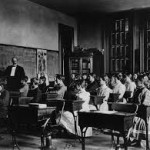 placed Latin, Greek, mathematics, and philosophy at its core. Since only about 3.5% of high-school students graduated the mass influx of immigration require a more universal, democratic approach to education. The progressive tradition grew out of this challenge as more educators sought to turn young Americans, especially new ones, into scholars, workers and citizens.
placed Latin, Greek, mathematics, and philosophy at its core. Since only about 3.5% of high-school students graduated the mass influx of immigration require a more universal, democratic approach to education. The progressive tradition grew out of this challenge as more educators sought to turn young Americans, especially new ones, into scholars, workers and citizens.
Today the overall goals of education can be divided into political, social and economic (Spring, 2012) with the primary goal to develop “human capital” by educating students to complete in a global labor market. We seem trapped in a language of schooling that stresses economics, accountability and compliance. For a long time now, our public talk of education has been shaped by concern about economic readiness and competitiveness. There is some mention of the traditional purposes of education – intellectual, civic and moral development – but not much.
The purpose of K-12 schooling should be to educate the complete child, with a balance of standards and assessments for a set core of subjects in both the sciences (STEM) and liberal arts for the benefit of both the student and society. The best educational philosophy to guide this instruction is a combination of William C. Bagley’s original concept of Essentialism which states that there is certain essential knowledge that every student should know 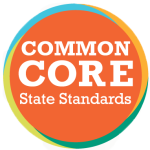 as they pass through each grade level and John Dewey’s Progressivism which is founded on student driven inquiry-based learning. This is more of an innovation-based education philosophy where the student is first taught required information and then he/she is free to further develop that knowledge through the four Cs’ of critical thinking, collaboration, communication and creativity.
as they pass through each grade level and John Dewey’s Progressivism which is founded on student driven inquiry-based learning. This is more of an innovation-based education philosophy where the student is first taught required information and then he/she is free to further develop that knowledge through the four Cs’ of critical thinking, collaboration, communication and creativity.
The common core state standards (CCSS) evolved out of the 1983 “A Nation at Risk” government report commissioned by the Reagan administration that was a scathing appraisal of public education. Of the reports five recommendations – improving content, raising standards, overhauling the teaching profession, adding time to the school day and year, and improving leadership and fiscal support – raising standards lead to the development of the common core, a set of streamlined but intense new standards introduced in 2009 that, though controversial, are still in use in more than 40 states.
Habit of the Mind
The big change for students is what is called “Habits of the Mind.” It’s the universality of how we think as humans. It’s subtle; it’s design-based thinking…the same thinking engineers use to solve problems. Educators are now being asked to solve problems in a similar way. The central question is: How do students’ best learn in the 21st century?
In English Language Arts (ELA) students are required to “Demonstrate independence,” “Comprehend as well as critique” and “Come to understand other perspectives and cultures;” In math it’s “Make sense of problems and persevere in solving them,” “Attend to precision,” and “Look for and express regularity in repeated reasoning;” and with NGSS in Math; and with Next Generation Science it’s “Ask questions (science) and define problems (engineering),” “Use mathematics and computational thinking,” and “Obtain, evaluate and communicate information.” The complexities of educating students in the 21st Century are said to center around balancing content instruction with developing deep thinking processes.
Knowledge of Most Worth
So these are the new requirements for teaching and learning with the CCSS but what about content.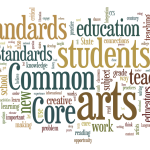 What exactly should be taught? This brings us to the question of “what knowledge is of greatest worth” in such a time of flux and change. This question has been asked as far back as Greek society and Herbert Spencer made this question famous in his 1859 essay.
What exactly should be taught? This brings us to the question of “what knowledge is of greatest worth” in such a time of flux and change. This question has been asked as far back as Greek society and Herbert Spencer made this question famous in his 1859 essay.
Socrates and Isocrates were contemporary Athenian teachers. Isocrates taught the arts of rhetoric and oratory as well as other subjects related to success in political life while Socrates also taught Rhetoric but spent much of his time on the question of whether “there was a special art and technique of teaching virtue that could make life truly worthwhile. Socrates himself could not convince a jury of Athenians that in criticizing the success route of the day he was not corrupting the youth of Athens.”(Broudy, 1981)
The Socrates-Isocrates split is repeated in every era. The schooling the dominate group in society judges to be needed for success automatically becomes the criterion of “quality” education; that is, the knowledge most worth. (Broudy, 1981) It seems that today the type of knowledge that is the most prized is that knowledge that can generate the most wealth. It is the “how to” knowledge. Yet, as in every era, the tendency of schools to become oriented to the success route of the day – or the vocation market – is questioned by Socratic surrogates. They advise that premature restriction of schooling to the skills of this or that trade or profession is inadvisable on both scholastic and economic ground. They believe that if the pupil does not acquire proficiency in the more generalized fields while in school, it will be difficult to acquire it elsewhere (Broudy, 1981).
Today we hear a lot about the need to prepare students for working in the global economy and that this demands teaching 21st century skills. The call for 21st Century knowledge “framework” rests on the assentation that education has failed to prepare students for the demands of the 21st century. Schooling (in terms of organization, structure, and format) remains the same today as it was throughout the 21st century. Reform educators such as Howard Garner and “The Partnership for 21st Century Skill” argue that “it has become increasingly evident that the labor force required by and increasingly globalized economy requires an altogether different model of education – one that transcends the 20th century skills of repetition, basic applied knowledge, and limited literacy.” (Kareluik, et al, 2013)
this demands teaching 21st century skills. The call for 21st Century knowledge “framework” rests on the assentation that education has failed to prepare students for the demands of the 21st century. Schooling (in terms of organization, structure, and format) remains the same today as it was throughout the 21st century. Reform educators such as Howard Garner and “The Partnership for 21st Century Skill” argue that “it has become increasingly evident that the labor force required by and increasingly globalized economy requires an altogether different model of education – one that transcends the 20th century skills of repetition, basic applied knowledge, and limited literacy.” (Kareluik, et al, 2013)
In their analysis Kareluik, et al, identified three broad knowledge categories (and three subcategories within each) needed for a 21st century education. These categories are “Foundation Knowledge” (Core Content Knowledge; Digital Literacy; and Cross-Disciplinary Knowledge); “Meta Knowledge” (Problem Solving & Critical Thinking; Communication and Collaboration; and Creativity and Innovation); and “Humanistic Knowledge” (Life/Job Skills/Leadership; Cultural Competence; and Ethical/Emotional Awareness).
In their discussion summary Kareluik, et al, hold that their three realms of knowledge can be seen as what we need to know, how we act on that knowledge and the values that we bring to our knowledge and action. However, they also state, “it is clear that not all knowledge and skills present in 21st century framework are unique and novel to this century.” Diane Ravitch stated, “There is nothing new 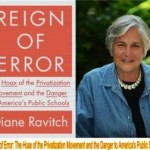 in the proposals of the 21st century skills movement. The same ideas were iterated and reiterated by pedagogues across the twentieth century.” (2009) They state the paradox that “nothing has changed and everything has changed. It means that though the 21st century is different from previous times, it does not mean that our core roles (to know, act and to value) have changed. That being said, even as we hold on to core ideas, we have to continually shift and come up with newer ways of instantiating them.”
in the proposals of the 21st century skills movement. The same ideas were iterated and reiterated by pedagogues across the twentieth century.” (2009) They state the paradox that “nothing has changed and everything has changed. It means that though the 21st century is different from previous times, it does not mean that our core roles (to know, act and to value) have changed. That being said, even as we hold on to core ideas, we have to continually shift and come up with newer ways of instantiating them.”
As far as who should decide the contemporary knowledge of most worth has to be a communal effort one that needs input from anyone with a vested interest which is everyone. However, in the final analysis I would rather it be trained and experienced professional from the various educational disciplines rather than ideologically bound Politians.
Of the subject “knowledge of most worth” Mike Rose says it well, “Think of what it would mean for our civic life (and for life in schools) to affirm the bedrock value of Knowledge – many kinds of knowledge, machinist’s to pediatrician’s – to affirm the wide range of ways people gain and apply knowledge, solve problems, think their way through their daily lives.” (Rose, 2009)
Common Core and Education Philosophy
Since my educational philosophy is that of Bagley’s original concept of Essentialism my vision of instruction would include a combination of Dewey’s and Liv Vygotsky’s as interpreted in Michael Glassman’s paper “Dewey and Vygotsky: Society, Experience, and Inquiry in Educational Practice.” While Glassman acknowledges that Dewey and Vygotsky shared “similar ideas concerning relationship and activity and learning/development, especially the roles everyday activities and social environment play in the educational process” he felt that the relationship between “process and goals” in education were entirely different.
Vygotsky believed that “social organization” was the main element in learning. He sees learning as only one tool in the developmental process in which the “process of learning” allows the child to fulfill their development potential. Accordingly, it is important for teachers/mentors to be a proactive guide to the child’s education using social environments to construct activities that will lead to understanding. Dewey, on the other hand, believed that the child gets educated by creating their own experiences that lead to natural inquiry. What is important is the process and the attitude of the child during that process. The desire to inquire leads to learning. Vygotsky believed in education to create a strong member of society whereas Dewey believed that education should develop the individualistic nature to stand out in society. (Glassman, 2001)
I believe in both education methodologies. I think that the student needs a core set of instruction from which to develop a sense of inquiry. I believe that teachers should be first mentor/instructors and then facilitators of inquiry-based learning. Children want and need parameters to operate in both at home and at school. They need to be exposed to sociologic fact and experience so that can grow their own. For example, in a class like chemistry first students must learn the core element before they can experiment with them; and in literature students need to read before they can critically write about what they experienced in the book. Not to assigning what the student should read would have them wondering in the weeds trying to figure it out.
What counts in learning is open to endless debate but I think the key is “balance.” Student should be given the tools to earning a living but also the tools to live a creative and happy life. The 21st century skill-set is important but so are the social tools to implement them and to be a productive member of a community. Many of the liberal arts contain the elements that are coveted in the science disciplines like, critical thinking, communication, collaboration and creativity. They also allow us to live a richer life filled with insight which allows us to relate to and communicate with a broader section of society than just the associates that we develop in our narrow friendship and work worlds.
Instructional Methodology
The instruction should be a combination of drills/standards/assessments complimented with project/inquiry based learning. Creative inclusionary teaching methods would be used like in Susan Ohanian’s article “On Stir-and-Serve Recipes for Teaching” were she used science to embed a reading class; and innovative curriculum would be used to teach cross-disciplinary knowledge as highlighted by Steven Wolk in “Why Go To School” enacting cultural understanding in social studies and global awareness through young adult literature.
Although they would accomplish the same thing the term “High-Stakes Testing” should be eliminated and replaced with “Accomplishment Tests.” They should be given through-out the course the concept of which can be described by the old adage “How do you eat and elephant? – one bite at a time.” For the liberal arts courses rubrics would be developed to assess students work. At the end of each course an “Innovation-based learning” model would be used to teach how failure should not be feared as it too can be a tool of learning. The students would be given an advance subject test that they would fail but it wouldn’t count on their evaluation. From that failure the students would use the questions as learning tools and then, from what they learned, use their imaginations to rewrite the questions.
References Articles
- Joel Spring, American Education, Fifteenth Edition (New York: McGraw-Hill, 2012), pp. 3, 4, 9, 29.
- J. Westley Null, William C. Bagley and the Founding of Essentialism: An Untold Story in American Education History, (Teahers College Record, Volume 109, Number 4, April 2007, pp.1013-1055) pp. 1014-15, 1042,
- Mike Rose, Why School?, (New York: The New Press, 2009), pp. 25,
- Kristen Kereluik, Punya Mishra, Chris Fahnoe, Laura Terry, What knowledge is of Most Worth: Teacher knowledge for 21st Century Learning, (Journal of Digital Learning in Teacher Education, vol.29, no. 4, 2013, pp. 127-133
- Harry S. Broudy, What Knowledge is of Most Worth?, (Educational Leadership, 1981, pp. 574-578
- Michael Glassman, Dewey and Vygotsky: Society, Experience, and Inquiry in Education Practice (Educational Researcher, vol 30, no. 4, 2001,pp.3-14
- Susan Ohanian, On Stir-and-Serve Recipes for Teaching (unknown)
- Steven Wolk, Why Go To School (Phi Delta Kappan, 2007, pp.648-658)
A New Dynamic
I recently had the opportunity to meet with Annie Millar, Director of Curriculum and Instruction for the Healdsburg Unified School District, to discuss, among other things, how the new Common Core State Standards are affecting the way she goes about her work.
She said that the big change for students is what she called “Habits of the Mind.” It’s the universality of how we think as humans. It’s subtle; it’s design-based thinking…the same thinking engineers use to solve problems. Educators are now being asked to solve problems in a similar way. The central question is: How do students best learn in the 21st century?
She showed me a chart that is a side-by-side comparison of CCSS for English Language Arts, Math, and Next Generation Science Standards. Each category had eight responses such as “Demonstrate independence,” “Comprehend as well as critique” and “Come to understand other perspectives and cultures” in ELA; “Make sense of problems and persevere in solving them,” “Attend to precision,” and “Look for and express regularity in repeated reasoning” in Math; and “Ask questions (science) and define problems (engineering),” “Use mathematics and computational thinking,” and “Obtain, evaluate and communicate information,” for NGSS. The complexities of educating students in the 21st Century center around balancing content instruction with developing deep thinking processes.
In the past, the State would buy K-12 curriculum from the big publishers and school district curriculum directors would coordinate with administration and teachers on selecting a curriculum. At this time, CCSS-aligned curriculum is still a couple of years, if not more, away. So it’s not the publishers that are developing it, it’s the “in the trenches” teachers leading the way. For example, the State of Louisiana, knowing that they could not possibly be in CCSS-compliance, sent back the entire slate of 2014-2015 K-12 curricula to the publisher.
I told Annie that I had spoken with a HHS teacher and asked, considering the CCSS requirements, what textbook she was using. She told me that she modifies the curriculum from an existing textbook to be more in line with CCSS and students are tested on that material. It’s teachers like this that are literally writing the new curriculum.
I then asked Annie about how the teachers are adjusting to the new CCSS requirements. She said that one of her primary goals is to support her teachers during the transition. Teachers benefit from additional support in making the change. They have to strategize how to build a “deep” understanding of how lasting learning occurs as they plan for their students to develop the “habits of mind” outlined in the CCSS. And the very nature of the CCSS requires teachers to collaborate with each other just like students are being asked to collaborate with one another.
One of Annie’s focuses is building in time for teachers to prepare their lessons. She said teachers have very little time to prep compared to the time spent in front of students. She said that U.S. teachers get a lot less prep time than teachers in other countries with higher academic achievement.
Another issue Annie sees is class time. Through this school year, Healdsburg High School used a mostly traditional six, 50-minute class structure. The problem is that, just as the teacher is getting deep into the lesson, the class is over. Next year, the school will be going to a seven-period day with block days consisting of three, longer class times. This would allow the students to get more subject-engaged and allow the teachers more instruction time.
Annie said that, as stated in Mary Burke’s article “Less is more,” HUSD is in a unique position to have the resources to be innovative. Big leaps in the acquisition of technology, forays into project-based learning based on real-world connections and Healdsburg Charter School are just a few examples of the innovations currently underway.
She said that it’s just a matter of time until all schools convert to integrated digital curriculum that can be updated on a daily basis. The K-12 paper textbook market is a $8 billion a year industry. Just think how that money could be used to create an exciting and dynamic learning environment for the students and a great work environment for teachers.
School Discipline and the Common Core
Dr. David Sortino’s article in the Santa Rosa, Ca. Press Democrat (Zero tolerance or restorative justice?) got me thinking how the suspension of Reilly Austin, Amanda Quon and several of their classmates from Sebastopol’s Hillcrest Middle School (Sonoma County parents fight back after alcohol sip leads to students’ 22-day suspension), relates to the new Common Core State Standards (CCSS). As creators of K-12 curriculum we use the standards as guides to develop progressive programs and their related supplements. We also use other sources besides CCSS such as Open Education Resources and the work of professionals, such as Dr. Sortino, as we focus on creating education products that will produce a 21st century education.
Dr. Sortino is an expert in child behavior and development. His belief in a restorative approach to student discipline is because of its positive effects on preventing future transgressions as opposed to the more negative effects of “zero-tolerance” probation.
The restorative approach is much more in tune with CCSS as it’s based on one of the prime focuses of the standards, “collaboration.” Inter-subject collaboration between teachers; between teachers and students; and between students and students. Collaboration is one of the five “c,” which also include “creativity,” “communication,” “critical thinking,” and “curiosity” that students need in today’s world.
In this episode, Reilly, Amanda and company thought the boy that handed them the alcohol laced soda was joking. The girls took a sip from the can out of curiosity. “Did the can really contain alcohol?” They found that it did and handed the can back to the boy. Reilly said the reason she didn’t report the incident was that she was scared that she was going to get in trouble along with everybody else and she didn’t want to be the reason everybody got in trouble. 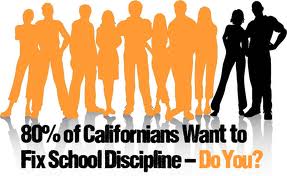
If a student is “scared” to talk to a school administrator or teacher it doesn’t bode well for the common core which expects teachers to be become more of mentors than lecturers. How can we expect students to take more responsibility for their own education, a prime skill necessary in the 21st century, when they don’t get collaboration from the people that administer their environment?
In addition, there was no communication with the student’s parents before the suspension, just demands. If there had been some collaboration with the parents I’m sure a much fairer outcome would have been achieved. And how can we expect our students to use critical thinking when none was used by the school administrators? It was like the Army Core of Engineers that drained half of Lake Mendocino prior to seeing if a predicted drought would take hold. They were just following instructions in an outdated manual.
Fortunately, it looks like critical thinking is being applied by the community based on the overwhelming criticism of the zero-tolerance policy. Like many other school districts in California Santa Rosa City Schools is moving toward modifying the zero tolerance policy. A committee of teachers, coaches, parents, principals and community members is meeting to come up with a new policy. (Santa Rosa School District may ease student suspension rule) However, one Santa Rosa School Board trustee thinks that removing the 25-day rule would create ambiguity and treat every student differently. Well, isn’t that the whole point? Experienced educators should be able to adjust the discipline, along with the parents, to fit the infraction.
Although we are looking for a standardized “baseline” in K-12 education, discipline, whether it’s a parent-child at home or the U.S. Justice System standardized punishment is not feasible as there are too many variables to take into consideration. This is where common sense comes in. I think we need Dr. Sortino on this committee.
Putting our Students First
It’s so sad. In a recent article by David Brooks (“When the Circus Descends” Press Democrat 4/20/2014) he talks about how elements from the right and left are attacking the Common Core Standards even as thousands of teachers are embracing the standards as a way to give our children a 21st century education.
What is it with these people who refuse to put our students and our country’s interest ahead of their own? I guess it’s pretty easy to understand the right’s point of view. They really don’t care about anything but their own ideology which is to attack anything that is progressive and enlightened even if it goes against their own self-interest. This curious behavior has many sources but it is preyed  upon by Republican and Libertarian politians and right wing pundits (or should I say entertainers). These entities DO act in their own self-interest as they suck money out of the conservative rank and file.
upon by Republican and Libertarian politians and right wing pundits (or should I say entertainers). These entities DO act in their own self-interest as they suck money out of the conservative rank and file.
On the left Brooks says, “The general critique from progressives, and increasingly from teachers’ unions, is that the standards are too difficult, that implementation is shambolic and teachers are being forced into some top-down straitjacket that they detest.” This sounds like unions still want to shield ineffective tenured teachers that don’t want to evolve. Well education, like everything else, evolves.
As stated, the common core standards are not curricula. They do not determine what students read or how teachers should teach. They are the goals for what students should know at the end of each grade. It will be several years before K-12 curriculum has been refined from the trail-and-error methods now being used. Until then teachers are being encouraged to adapt existing curriculum and to supplement it with OER (Open Education Recourses – such as in the Khan Academy) found on the internet. This is paving the way for the integrated digital curriculum (paperless textbooks) of the future where curriculum can be changed and updated on a daily basis. Not only is digital curriculum a more efficient and effective way of delivering content it will save school districts billions of dollars not having to replace outdated paper textbooks.
Along with the new common core guided curriculum will come progressive teaching platforms which are designed to take workloads off teachers as they put more of the learning responsibility on students. Students actually become partners their own education. Collectively called Blended-based Learning, these platforms gives students access to a broader range of learning experiences, and it allows them to learn at their own pace in a more personalized learning environment. Many of these platforms are already being implemented across the country as common core evolves into common sense.
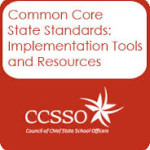 Some have complained about the new computer-based assessments as being another layer of testing. The new tests will not be another layer they will replace the old STAR (Standardized Testing and Reporting) tests. In addition, more rubrics scoring (weighted importance) is being used in Project-based assessments.
Some have complained about the new computer-based assessments as being another layer of testing. The new tests will not be another layer they will replace the old STAR (Standardized Testing and Reporting) tests. In addition, more rubrics scoring (weighted importance) is being used in Project-based assessments.
Seeing the exciting potential of a modern education system thousands of K-12 school administrators, teachers, curriculum developers, parents and students are moving full steam ahead on implementation. The movement is happening so fast that it’s kind of fun watching the naysayers, on both the right and left, standing there watching this speeding train just pass them by.
If anyone wants to see just how fast the educational landscape is changing they should subscribe to two great electronic educations sites, eSchool News (www.eschoolnews.com) and the Hechinger Report (www.hechingerreport.org) as well as the U.S. Department of Education blog at (www.ed.gov@public.govdelivery.com).
The Launch of i-pel’s Website
The Institute of Progressive Education and Learning is proud to announce the launch of its new education website. The purpose of this website is to support our ongoing efforts to give all of America’s K-12 students a useful education.
Over a year in development and containing over fifty K-12 education categories and almost 600 images www.i-pel.org is one of the more unique educational sites you will encounter. It was developed as both an information and in-depth research resource for school administrators, teachers, parents, students, curriculum developers, publishers, education writers, education game designers and government officials.
Our primary focus is the research and development of progressive integrated K-12 academic and tech/trade curriculum. Based on the premise that the immersion of technology into current k-12 curriculum has just begun, i-pel looks to combine the new curriculum standards with the most advanced in-classroom technology. Our goal is to help the K-12 educational community evolve to a point where each day all children look forward to the joy of learning and becoming part of the foundation that keeps America the most advance society in the World.
The reasoning for our approach is based on the fact that approximately 7,000 students drop out of the nation’s 100,000 public elementary and secondary schools every day. The U.S. high school completion rate of the nation’s approximate 54 million students enrolled in public and private schools is dropping slightly in real terms, and dramatically relative to other industrialized nations.
Our focus is on educating alternate learning style students, such as the spatial-visual and kinesthetic learning students, and the failing and disenfranchised students. To that end we are looking to develop core curriculums that are progressive in both visual and conceptual learning. Our goal is to make learning fun through original and compelling interactive content and to increase the test scoring required by new Common Core Standards.
In response to today’s evolving K-12 education environment i-pel will be developing not only challenging K-12 programs that meet Common Core standards in Math, English, Science, History, Social Studies and Technology but also creative curriculum in middle school psychology, IT-tech and a middle school look at the high school experience. One of our primary goals is to help the weakest students prepare for testing with innovative learning techniques that reinforce content with interactive activities and entertainment supplements that encourage and reward learning achievement.
i-pel’s “Whatsit” Academy is where all of i-pel’s STEM courses will be taught. The “Whatsit” Academy is a fictional hi-tech, K-12 technical school with real students and teachers. The course chapters will be taught through entertaining episodic elements and the school will have its own culture with student relationships and K-12 every-day problems. Many of the interactive elements will be virtual field trips in the hi-tech real world of computers, robots, artificial intelligence and science fiction.
The “Whatsit” Academy’s first course will be a middle school computer technology curriculum which brings the basics of computer science from college to the middle school. The course literally teaches 10-14 year-old how to be computer technicians.
Our programs will allow teachers to assess student progression in real-time allowing a more efficient education that allows teachers and administrators to monitor student progress. All i-pel content will conform to state standards and will be able to be customized to support any technology platform.
We are a firm believer that the Common Core Standards will work to provide a uniform education to all U.S. students so they can be prepared for an active and participatory adult life. The Common Core program is a continuation of the progressive effort to find ways to provide our nation’s children with a contemporary technology-based education. Our children need it and our nation needs it for them.
Please share this site with anyone you think would benefit from it. Also we welcome any comments or insights that will help improve our website and check in often as we are continually updating the site.
The Value of Common Core in Schools
Santa Rosa Press Democrat
2/6/2014
By: Michael Haran
George F. Will’s article (The Common Core is Worth Opposing 1/17/2014) is amazing in its “conservative” mentality. He bashes the Common Core Standards as a continuation of “Fifty years of increasing Washington inputs into K-12 education that has coincided with disappointing cognitive outputs from schools.” Hello? This is exactly why the Standards were enacted. 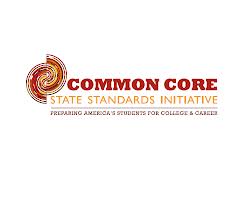
Will’s reminds us that the 1965 Elementary and Secondary Education Act, the 1970 General Education Provisions Act an d the 1979 law that created the Department of Education are all federal intrusions into what he calls, “state and local responsibility for curriculum control.” He complains that “what begins with national standards must breed ineluctable pressure to standardized educational content.”![]()
He notes that, “Washington already is encouraging the alignment of the GED, SAT and ACT tests with Common Core. By a feedback loop, these tests will beget more curriculum conformity. All this, he contends, will take a toll on parental empowerment.”
What Will fails to recognize, or admit, is that all his criticisms are why the standards were initiated. He says that “it is more likely there will be a half a dozen innovative governors than one creative federal education bureaucracy.” With this remark Will is right. The Common Core Initiative was established by the National Governors Association, many of which are Republicans, and the Council of Chief State School Officers based on a 2004 report titled, “Ready or Not: Creating a High School Diploma That Counts.” It found that both employers and colleges are demanding more of high school graduates and that current high-school exit expectations fall well short of demands.
 In his article “Why Our Nation Needs Common Standards,” (Hechinger Report, July 18, 2013) Jonah Edelman said “The Common Core Standards are clear and high standards for what every child in the United States should know by the end of each grade and are a practical and effective solution for a system that now dooms some students to learn far less than their peers who happen to live in other states.
In his article “Why Our Nation Needs Common Standards,” (Hechinger Report, July 18, 2013) Jonah Edelman said “The Common Core Standards are clear and high standards for what every child in the United States should know by the end of each grade and are a practical and effective solution for a system that now dooms some students to learn far less than their peers who happen to live in other states.
They benefit students in states with weak academic standards. They benefit teachers who want to access and share the best possible lesson plans. They benefit parents who have a right to know that an “A” in school or a “proficient” on the state test actually means their child is on track.
Will insinuates that Common Core roll out is experiencing the same “federal touch” that has given us HealthCare.gov. What he doesn’t say is that all new government programs experience roll-out problems. Social Security did, Medicare Part B did and Common Core will.
The biggest problems are cost and technology. Georgia spends 8-9 dollars per student to administer five-subject tests compared to the Common Core’s new per-student cost estimate of $29.50 for just two tests. Only 28 percent of Oklahoma school districts have the infrastructure necessary for the new exams. Both of these problems will be addressed as the $4.35 billion Race to the Top money is released to states when the Common Core Standards are initiated in the 2014-15 school year.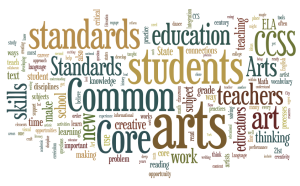
People like George Will look at progressive education as a bad thing. They don’t like change even though change is inevitable. Technology has made the U.S., like the world, a smaller place. Education conformity makes America’s workforce more efficient which allow people to move to where the jobs are. Will calls Bill Gate’s remark: “It’s ludicrous to think that multiplication in Alabama and multiplication in New York are really different,” flippancy. I call it common sense – I call it Common Core.

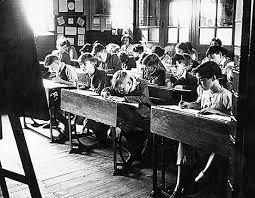
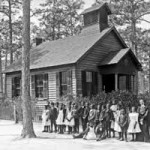
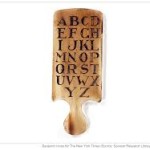

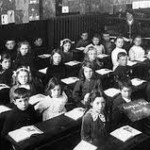

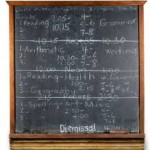







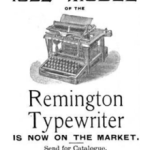

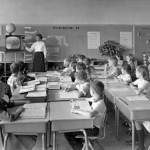
![PhilTV50[1]](http://i-pel.org/wp-content/uploads/2015/05/PhilTV501-150x150.jpg)
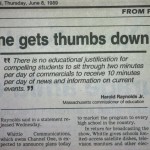



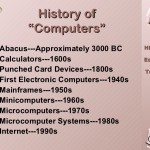
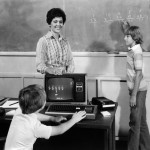
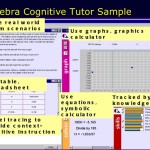
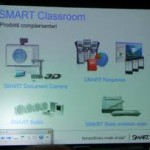
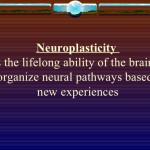
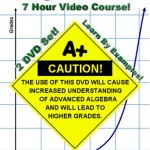
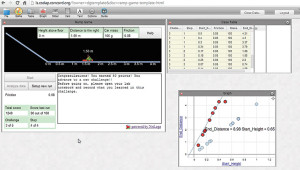
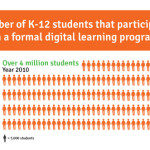
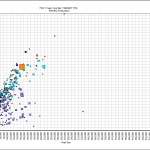
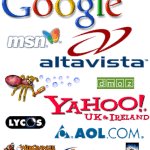


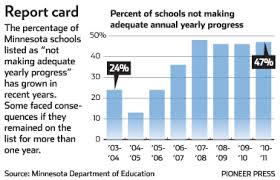


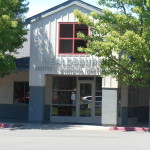

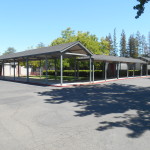
Recent Comments